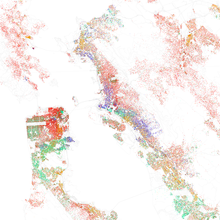
Alameda County is a county located in the U.S. state of California. As of the 2020 census, the population was 1,682,353, making it the 7th-most populous county in the state and 21st most populous nationally. The county seat is Oakland. Alameda County is in the San Francisco Bay Area, occupying much of the East Bay region.
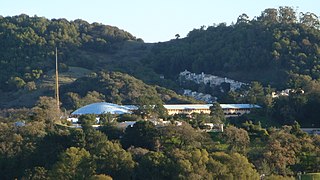
Marin County is a county located in the northwestern part of the San Francisco Bay Area of the U.S. state of California. As of the 2020 census, the population was 262,231. Its county seat and largest city is San Rafael. Marin County is across the Golden Gate Bridge from San Francisco, and is included in the San Francisco–Oakland–Berkeley, CA Metropolitan Statistical Area.
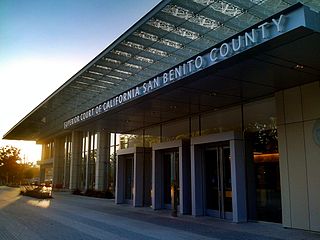
San Benito County, officially the County of San Benito, is a county located in the Central Coast region of California. Situated in the California Coast Ranges, the county had a population of 64,209, as of the 2020 census. The county seat is the city of Hollister.

Solano County is a county located in the U.S. state of California. As of the 2020 census, its population was 453,491. The county seat is Fairfield.

Stanislaus County is a county located in the San Joaquin Valley of the U.S. state of California. As of 2023, its estimated population is 564,404. The county seat is Modesto.

Mexican Americans are Americans of full or partial Mexican descent. In 2022, Mexican Americans comprised 11.2% of the US population and 58.9% of all Hispanic and Latino Americans. In 2019, 71% of Mexican Americans were born in the United States. Mexicans born outside the US make up 53% of the total population of foreign-born Hispanic Americans and 25% of the total foreign-born population. Chicano is a term used by some to describe the unique identity held by Mexican-Americans. The United States is home to the second-largest Mexican community in the world, behind only Mexico.

Fargo–Moorhead, also known as the FM area, is a common name given to the metropolitan area comprising Fargo, North Dakota; Moorhead, Minnesota; and the surrounding communities. These two cities lie on the North Dakota–Minnesota border, on opposite banks of the Red River of the North. The region is the cultural, retail, health care, educational, and industrial center of southeastern North Dakota and northwestern Minnesota.

The demographics of Chicago show that it is a very large, and ethnically and culturally diverse metropolis. It is the third largest city and metropolitan area in the United States by population. Chicago was home to over 2.7 million people in 2020, accounting for over 25% of the population in the Chicago metropolitan area, home to approximately 9.6 million.

White Americans are Americans who identify as white people. In a more official sense, the United States Census Bureau, which collects demographic data on Americans, defines "white" as "[a] person having origins in any of the original peoples of Europe, the Middle East, or North Africa". This group constitutes the majority of the people in the United States. According to the 2020 census, 71%, or 235,411,507 people, were White alone or in combination, and 61.6%, or 204,277,273 people, were White alone. This represented a national white demographic decline from a 72.4% white alone share of the US population in 2010.
The United States has a racially and ethnically diverse population. At the federal level, race and ethnicity have been categorized separately. The most recent United States census recognized five racial categories, as well as people who belong to two or more of the racial categories. The United States also recognizes the broader notion of ethnicity. The 2000 census and 2010 American Community Survey inquired about the "ancestry" of residents, while the 2020 census allowed people to enter their "origins". The Census Bureau also classified respondents as either Hispanic or Latino, identifying as an ethnicity, which comprises the minority group in the nation.

The demographics of Queens, the second-most populous borough in New York City, are highly diverse. No racial or ethnic group holds a majority in the borough.
The demographics of the Bronx are characterized by a Hispanic majority and by the lowest percentage of Whites among all boroughs.
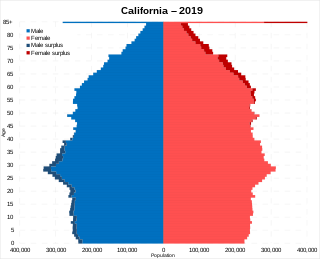
California is the most populous US state, with an estimated population of 38.9 million as of 2023. It has people from a wide variety of ethnic, racial, national, and religious backgrounds.
According to the U.S. Census Bureau, as of 2023, Texas was the second largest state in population after California, with a population of 30,503,301, an increase of more than 1.3 million people, or 4.7%, since the 29,145,505 of the 2020 census. Its apportioned population in 2020 was 29,183,290. Since the beginning of the 21st century, the state of Texas has experienced strong population growth. Texas has many major cities and metropolitan areas, along with many towns and rural areas. Much of the population is concentrated in the major cities of Dallas–Fort Worth, Austin, San Antonio, Houston, McAllen, and El Paso and their corresponding metropolitan areas. The first four aforementioned main urban centers are also referred to as the Texas Triangle megaregion.
White Hispanic and Latino Americans, also called Euro-Hispanics, Euro-Latinos, White Hispanics, or White Latinos, are Americans of white ancestry and ancestry from Latin America. It also refers to people of European ancestry from Latin America that speak Spanish or Portuguese natively and immigrated to the United States.
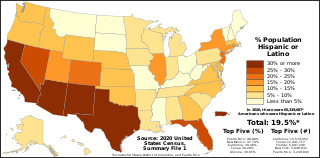
The demographics of Hispanic and Latino Americans depict a population that is the second-largest ethnic group in the United States, 62 million people or 18.7% of the national population.

Americans are the citizens and nationals of the United States of America. The United States is home to people of many racial and ethnic origins; consequently, U.S. federal law does not equate nationality with race or ethnicity but with citizenship. The U.S. has 37 ancestry groups with more than one million individuals. White Americans with ancestry from Europe, the Middle East, or North Africa form the largest racial and ethnic group at 61.6% of the U.S. population. Hispanic and Latino Americans form the second-largest group and are 18.7% of the American population. Black Americans constitute the country's third-largest ancestry group and are 12.4% of the total U.S. population. Asian Americans are the country's fourth-largest group, composing 6% of the American population. The country's 3.7 million Native Americans account for about 1.1%, and some 574 native tribes are recognized by the federal government. In addition to the U.S., people of American descent can be found internationally. As many as seven million Americans are estimated to be living abroad, and make up the American diaspora.
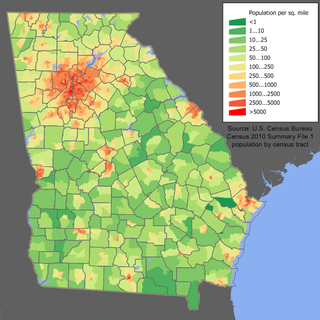
Georgia is a South Atlantic U.S. state with a population of 10,711,908 according to the 2020 United States census, or just over 3% of the U.S. population. The majority of the state's population is concentrated within Metro Atlanta, although other highly populated regions include: West Central and East Central Georgia; West, Central, and East Georgia; and Coastal Georgia; and their Athens, Columbus, Macon and Warner Robins, Augusta, Savannah, Hinesville, and Brunswick metropolitan statistical areas.
Saint Paul is the capital city of the U.S. state of Minnesota and the county seat of Ramsey County. As of the 2000 census, the population was 287,151. The U.S. Census Bureau estimated the city's population at 279,590 in 2008.
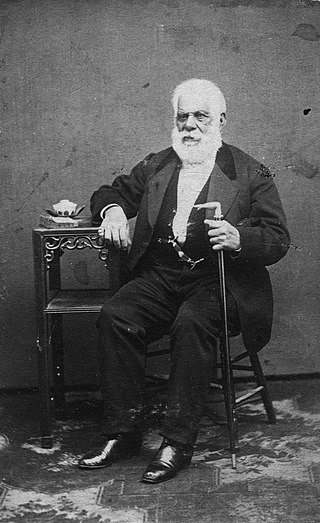
African American Californians or Black Californians are residents of the state of California who are of African ancestry. According to 2019 United States Census Bureau estimates, those identified solely as African American or Black constituted 5.8% or 2,282,144 residents in California. Including an additional 1.2% who identified as having partial African ancestry, the figure was 7.0%. As of 2021, California has the largest multiracial African American population by number in the United States. African Americans are the fourth largest ethnic group in California after Hispanics, Whites, and Asians. Asians outnumbered African Americans in the 1980s.

